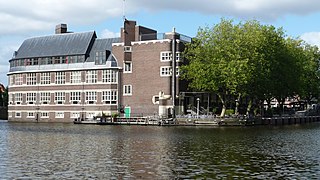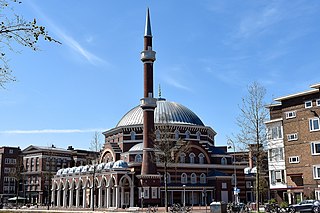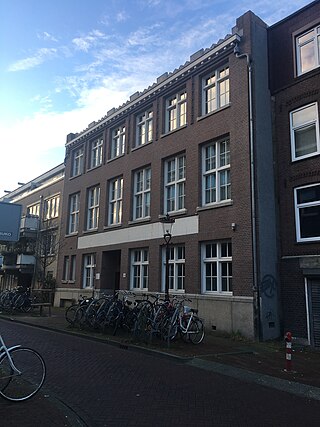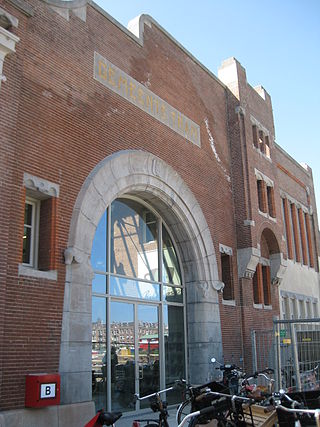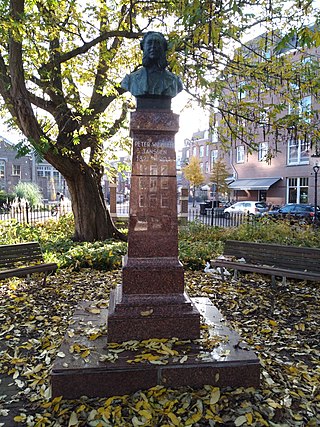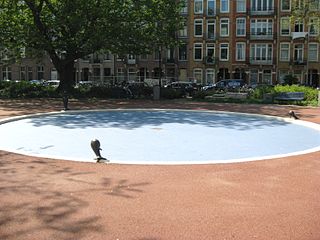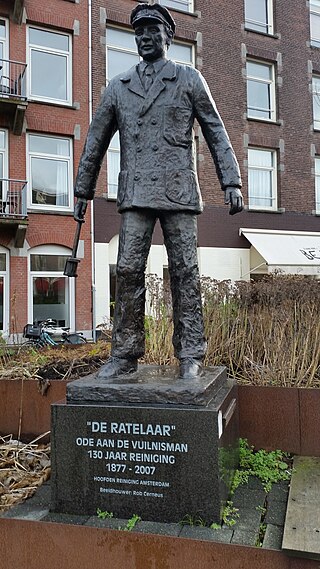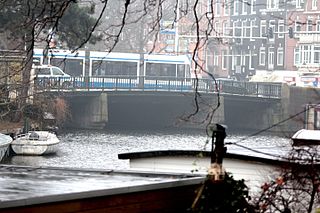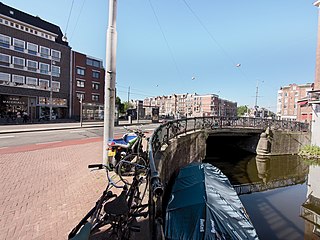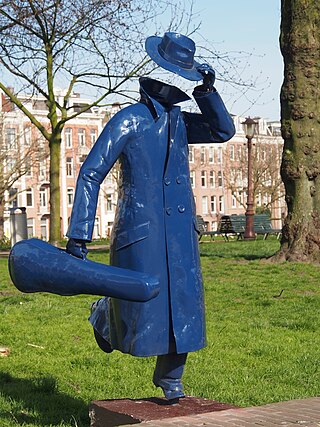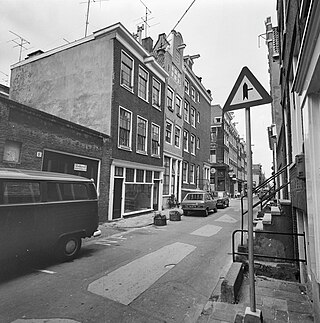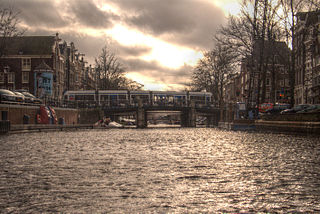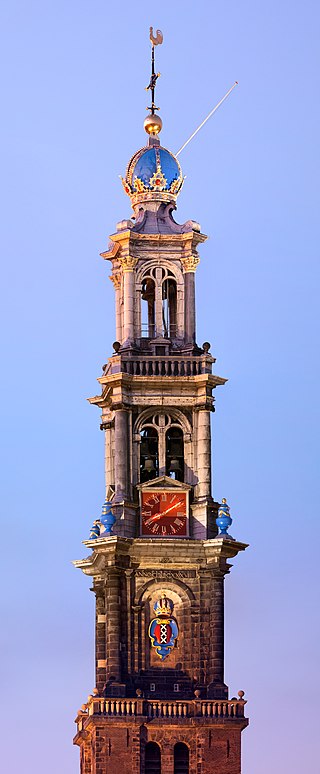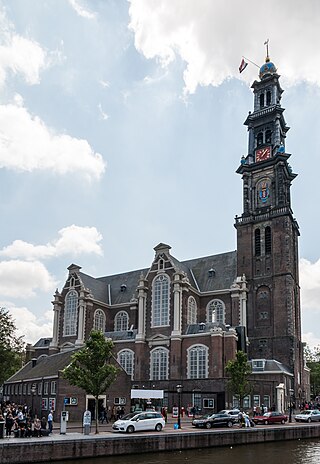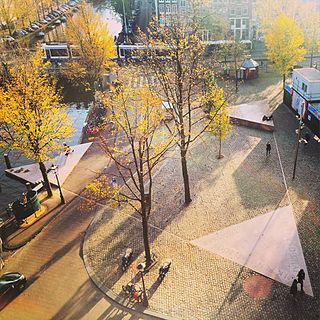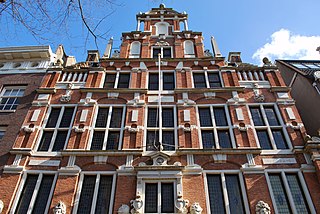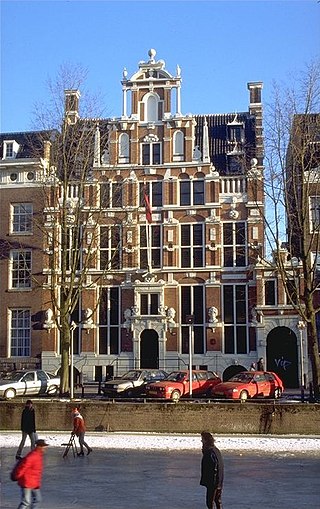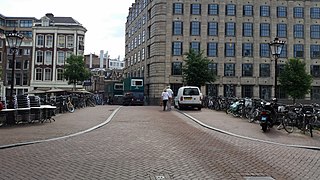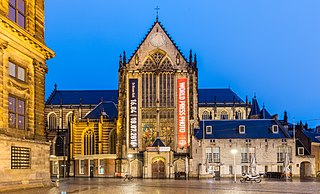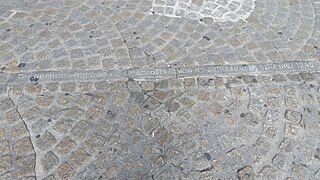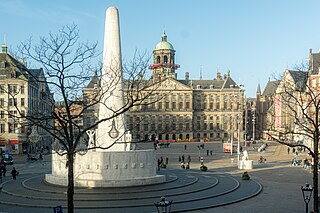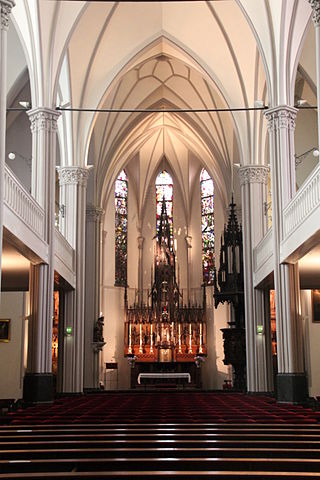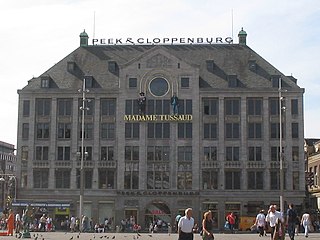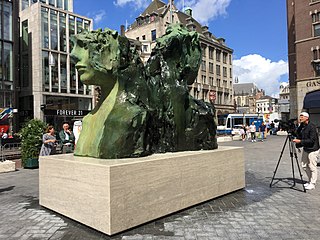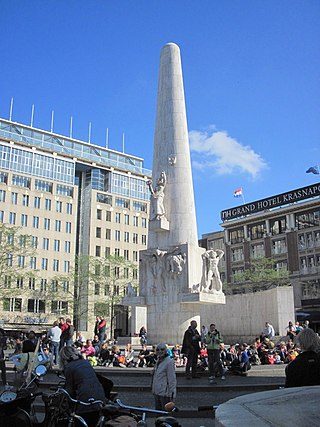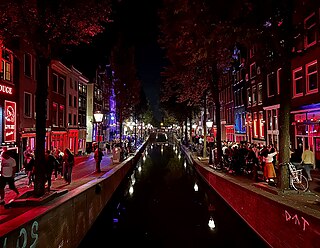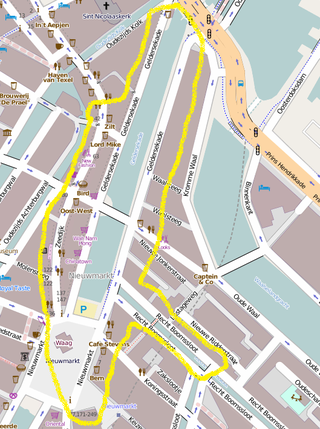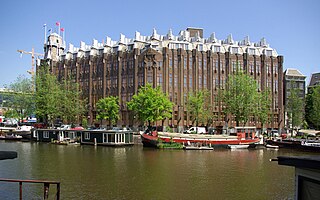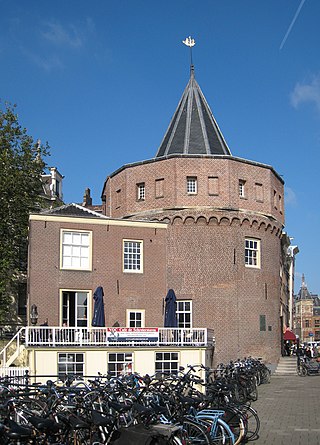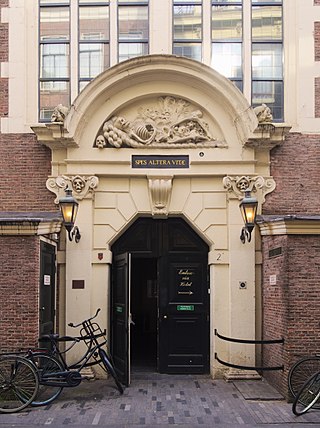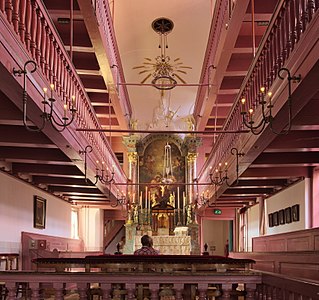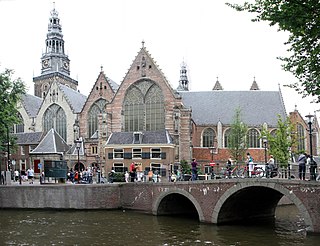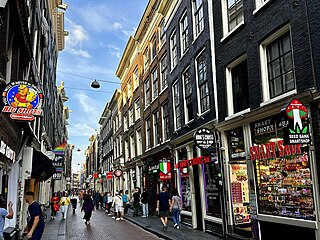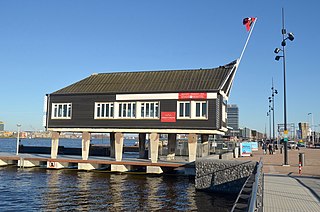Self-guided Sightseeing Tour #6 in Amsterdam, Netherlands
Legend
Guided Free Walking Tours
Book free guided walking tours in Amsterdam.
Guided Sightseeing Tours
Book guided sightseeing tours and activities in Amsterdam.
Tour Facts
12.4 km
123 m
Experience Amsterdam in Netherlands in a whole new way with our free self-guided sightseeing tour. This site not only offers you practical information and insider tips, but also a rich variety of activities and sights you shouldn't miss. Whether you love art and culture, want to explore historical sites or simply want to experience the vibrant atmosphere of a lively city - you'll find everything you need for your personal adventure here.
Activities in AmsterdamIndividual Sights in AmsterdamSight 1: Europa
Europe is an image of Hans Kuyper.
Sight 2: Het Sieraad
Het Sieraad is a multifunctional school building on the Postjesweg in Amsterdam. It is owned by the Ymere housing corporation. It is largely surrounded by the water of the Admiralengracht, the Postjeswetering and the Kostverlorenvaart and is built on a pentagonal plot. Since January 20, 2003, the building has been a national monument.
Sight 3: Westermoskee
Westermoskee is a mosque located in Amsterdam, Netherlands. It is situated on the bank of the canalized river Schinkel in the Chassébuurt in De Baarsjes in the borough of Amsterdam-West. With a floor surface of 800 m2 and a capacity of 1700 people, it is the largest mosque in Amsterdam.
Sight 4: Boegbeeld
The figurehead can refer to: The figurehead (Amsterdam), a work of art in Amsterdam-West by Leonie Mijnlieff The figurehead (Roman), a novel from 2002 by the Dutch writer Mala Kishoendajal
Sight 5: Zimmerterrein
The Zimmerterrein, also known as the Landje van Ome Kick, is a small park in the Bellamybuurt in Amsterdam-West. The park is located on the east side of the Kostverlorenvaart near the Wiegbrug. On the north side, the park borders on the Tolbrugstraat and on the south side on the Schimmelstraat. The site forms an interruption in the Tweede Kostverlorenkade. The following types of trees are in the park: elms, hawthorns and prunuses.
Sight 6: El Tawheed
The El Tawheed Mosque is a Sunni mosque in Amsterdam, Netherlands.
Sight 7: De Hallen
Get Ticket*De Hallen is a cultural center in the Kinkerbuurt in Amsterdam-West, with more than two million visitors a year. This former tram depot in the heart of Amsterdam-West houses a diversity of creative companies and talents, such as the FilmHallen, FoodHallen, De Hallen Studios, various shops with products from local makers such as The Maker Store and NOWA & Nature Bar, a hotel, a childcare centre, bicycle shop Recycle, gallery Beeldend Gesproken and one of the most busy branches of the Amsterdam Public Library with reading café Belcampo,
Sight 8: P.W. Janssen
The Peter Wilhelm Janssen Monument is a memorial on the Bellamyplein in Amsterdam-West.
Sight 9: waterdraagster
Water Carrier with Fish is an artistic work of art in Amsterdam-West.
Sight 10: De Ratelaar
The rattle is a bronze statue in Amsterdam Oud-West.
Sight 11: Roosje
Roosje is a mural by Dutch artist Rombout Oomen, named after the erotic poem of the same name by Jacob van Lennep.
Sight 12: Ryckerbrug
The Rijckerbrug or Ryckerbrug is a fixed slab bridge between Amsterdam-Centrum and Amsterdam-West and runs over the Singelgracht. The bridge connects the Rozengracht with the De Clercqstraat. The bridge spans the Singelgracht and has its western abutment in the Nassaukade.
Sight 13: Brug 117
Bridge 117 is a fixed bridge in the centre of Amsterdam.
Sight 14: Bureau Raampoort
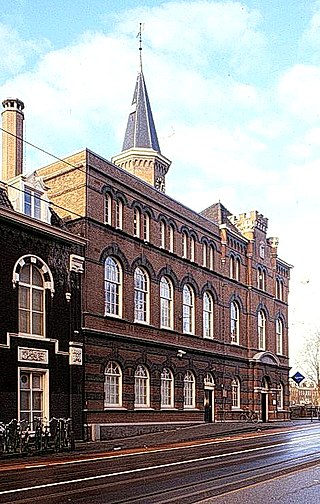
Raampoort Police Station, also known as Raampoort Police Station, is a 19th-century former police station on the Singelgracht in Amsterdam, on the corner of Marnixstraat and Tweede Hugo de Grootstraat. The building from 1888, designed by Willem Springer, was designated a national monument in 2001.
Sight 15: Running man with violin statue
The Blue Violin Player or De Blauwe Vioolspeler (1982) is a metal sculpture located near the Raampoortbrug bridge in Amsterdam Netherlands. It is also called Man Trying to Catch Tram 10 or Man with Violin Case. The identity of the artist is unknown.
Sight 16: Theo Thijssen Museum
The Theo Thijssen Museum is a museum in Amsterdam, dedicated to writer, teacher and politician Theo Thijssen. It is managed by the Theo Thijssen Foundation and is located on the ground floor of Thijssen's birthplace at Eerste Leliedwarsstraat 16.
Sight 17: Nieuwe-Wercksbrug
The Nieuwe-Wercksbrug is a fixed bridge in Amsterdam-Centrum. The bridge connects the Westermarkt with the Rozengracht. It spans the Prinsengracht at the level of the Oude Wester.
Sight 18: Westertoren
The Westertoren in Amsterdam is the tower of the Westerkerk, at Prinsengracht 279, near the Westermarkt in Amsterdam-Centrum. The tower is owned by the municipality of Amsterdam. The tower will be restored from February 2023. This is expected to last until early 2025.
Sight 19: Westerkerk
The Westerkerk is a Reformed church within Dutch Protestant Calvinism in central Amsterdam, Netherlands. It lies in the most western part of the Grachtengordel neighborhood, next to the Jordaan, between the Prinsengracht and Keizersgracht.
Sight 20: Homomonument
The Homomonument is a memorial in the centre of Amsterdam, the capital of the Netherlands. It commemorates all gay men and lesbians who have been persecuted because of their sexual orientation. Opened on 5 September 1987, it was the first monument in the world to commemorate gays and lesbians who were killed by the German Nazi regime.
Sight 21: Embassy of the Free Mind
The Embassy of the Free Mind is a museum, library and platform for free thinking inspired by the philosophy of the Bibliotheca Philosophica Hermetica collection. The museum focuses on the European culture of free thinking of the past 2,000 years with Hermetic wisdom as the source of inspiration: insight into the connection between God, cosmos and man. This connection is reflected in the Hermetic, alchemical, astrological, magical, mystical, kabbalistic and Rosicrucian texts and images in the collection.
Wikipedia: Embassy of the Free Mind (EN), Website, Facebook, Instagram
Sight 22: Het Huis met den Hoofden
The House with the Heads is a large canal house on the Keizersgracht 123 in Amsterdam, named after the six ornaments shaped as heads, which are on the façade. The house is a rijksmonument and is listed on the Top 100 Dutch heritage sites.
Sight 23: Multatuli Museum
The Multatuli Museum is a 17th-century museum in the Jordaan neighbourhood of Amsterdam, Netherlands. It is dedicated to Eduard Douwes Dekker (1820-1887), whose pen name was Multatuli. Multatuli is best known for his 1860 novel Max Havelaar, inspired by time spent in Indonesia while serving in the Dutch civil service. Eduard Douwes Dekker was born in the Multatuli House and he died 67 years later in Ingelheim am Rhein, Germany on a red sofa that can be seen here to date.
Sight 24: Huis Bartolotti
The Bartolotti House is a canal house at Herengracht 170-172 in Amsterdam. It was built around 1617 for Willem van den Heuvel tot Beichlingen, one of the richest Amsterdammers at the time, who had inherited a lot of money from a childless uncle by marriage, Giovanni Battista Bartolotti, a merchant from Bologna. In this uncle's will, it was stipulated that he had to call himself "Bartolotti". The name is sometimes also "From the Hill to Beichlingen Said Bartolotti". His mother Maria Pels (?-1592) married Willem Bartolotti in Stade in 1589. Her son Jan Baptist Bartolotti van den Heuvel (1590-1624) married Leonora Hellemans Arnoudsdochter (1594-1661) in 1612. In 1639, Jacoba Victoria, daughter of Guillelmo (1602-1658), was born in the house.
Sight 25: Brug 6
Bridge 6 is a fixed bridge in the centre of Amsterdam. The road bridge connects the Paleisstraat with the Gasthuismolensteeg. In doing so, it spans the Singel. To the southeast of the bridge is the Bungehuis.
Sight 26: Huiszittenbrug

Bridge 8 is the official designation of a bridge in the centre of Amsterdam. Until 5 July 2016, the bridge had the unofficial name Huiszitbrug, which referred to the Huiszitpakhuis. However, this name has been dropped.
Sight 27: New Church
Join Free Tour*The Nieuwe Kerk is a 15th-century church in Amsterdam located on Dam Square, next to the Royal Palace. Formerly a Dutch Reformed Church parish, it now belongs to the Protestant Church in the Netherlands.
Sight 28: Dam Square Victims 7 mei 1945
A plaque and thirty-two paving stones on the Dam in Amsterdam-Centrum commemorate the victims of the Shooting on the Dam on May 7, 1945.
Wikipedia: Monument voor Damslachtoffers 7 mei 1945 (NL), Website
Sight 29: Dam Square
Dam Square or the Dam is a town square in Amsterdam, the capital and most populated city of the Netherlands. Its notable buildings and frequent events make it one of the best-known and most important locations in the city and the country.
Sight 30: Normaal Amsterdams Peil
Amsterdam Ordnance Datum or Normaal Amsterdams Peil (NAP) is a vertical datum in use in large parts of Western Europe. Originally created for use in the Netherlands, its height was used by Prussia in 1879 for defining Normalnull, and in 1955 by other European countries. In the 1990s, it was used as the reference level for the United European leveling Network (UELN) which in turn led to the European Vertical Reference System (EVRS).
Sight 31: De Papegaai
De Papegaai is the lesser of the two parochial churches in the St Nicholas Roman Catholic parish in Amsterdam. The church is dedicated to Saints Peter and Paul. It is nicknamed "De Papegaai" because it was originally hidden in a garden behind a regular housefront that belonged to a bird-trader in the days when Catholicism could not be practised publicly. Today there is a narrow, Neo-Gothic facade flanked by statues of St Joseph and a perched parrot. The church is on the busy Kalverstraat just south of Dam Square, and invites people in for quiet, as well as celebrating Sunday Mass in Latin with Gregorian chant.
Wikipedia: Church of St. Peter and St. Paul, Amsterdam (EN), Website
Sight 32: Madame Tussauds Amsterdam
Madame Tussauds Amsterdam is a wax museum situated in Amsterdam, the capital city of the Netherlands. It is located in the centre of the city on Dam Square, near the Royal Palace of Amsterdam. Founded in 1970, it was the first Madame Tussauds that was opened in mainland Europe as well as being the first foreign branch of the British institution. The collection of Madame Tussauds Amsterdam consists of a collection of wax figures of famous celebrities in different categories such as the Golden Age of Dutch history, music, sport and film.
Sight 33: Rokinfontein
The Rokin Fountain is a work of art in the shape of a fountain in the center of Amsterdam. The work is part of the major redevelopment of the city center under the name The Red Carpet.
Sight 34: National Monument
Join Free Tour*The National Monument on Dam Square is a 1956 cenotaph in Amsterdam, Netherlands. A national Remembrance of the Dead ceremony is held at the monument every year on 4 May to commemorate the casualties of World War II and subsequent armed conflicts.
Sight 35: Canal Ring Area of Amsterdam
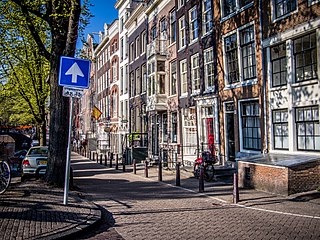
The Grachtengordel, known in English as the Canal District, is a neighborhood in Amsterdam, Netherlands located in the Centrum district. The seventeenth-century canals of Amsterdam, located in the center of Amsterdam, were added to the UNESCO World Heritage List in August 2010. The Amsterdam Canal District consists of the area around the city's four main canals: the Singel, the Herengracht, the Keizersgracht, and the Prinsengracht. From the Brouwersgracht, the canals are generally parallel with one another, leading gradually southeast into the Amstel river.
Sight 36: Red Light District
De Wallen is the largest and best known red-light district in Amsterdam. It consists of a network of alleys containing approximately 300 one-room cabins rented by prostitutes who offer their sexual services from behind a window or glass door, typically illuminated with red lights and blacklight. Window prostitution is the most visible and typical kind of red-light district sex work in Amsterdam.
Sight 37: Chinatown
Chinatown is the Chinese neighborhood of Amsterdam. The neighborhood is located around the Geldersekade and Zeedijk in the old city center (Amsterdam-Centrum).
Sight 38: Scheepvaarthuis
The Shipping House is a building on the western tip of the Waalseiland near Amsterdam harbour that is one of the top 100 Dutch heritage sites and generally regarded as the first true example of the Amsterdam School, a style characterised by "expressive dynamism, lavish ornamentation and colourful embellishments". It is situated on the Prins Hendrikkade and was erected on the spot where Cornelis Houtman's first trip to the East Indies had begun in 1595. The first part was built 1913 - 1916 ; the second part was built 1926 -1928. Originally, it was the headquarters of six leading Amsterdam shipping companies: the Netherlands Steamship Company (SMN), the Royal Packet Navigation Company (KPM), the Java-China-Japan Line (JCJL) and the Royal Dutch Steamboat Company (KNSM) with subsidiary New Rhine Navigation Company (NRM) and acquired in 1912 Royal West India Mail Service (KWIM).
Sight 39: Weepers' Tower
The Schreierstoren, originally part of the medieval city wall of Amsterdam, the Netherlands, was built in the 15th century. It is located at the Prins Hendrikkade 94 in the city center of Amsterdam. It was the location from which Henry Hudson set sail on his journey to Northern America. This expedition would lead to the discovery of the modern New York metropolitan area, which laid the foundation for Dutch colonization of the region. It was built as a defense tower in 1487. It is currently a café and nautical bookstore.
Sight 40: Sint Olofskapel
St. Olof's Chapel, or Oudezijds Chapel, is a building in the Dutch city of Amsterdam. The former church building is located in the city center of Amsterdam, between the Zeedijk and the Nieuwebrugsteeg, near the Damrak. The first St. Olof's Chapel was built between 1440 and 1450 against a large city gate, the St. Olof's Gate. In 1618 the gatehouse was demolished, but the former passage is still called "Sint Olofspoort". Patron saint was "Saint Olof".
Sight 41: Ons' Lieve Heer op Solder
Ons' Lieve Heer op Solder is a 17th-century canal house, house church, and museum in the city center of Amsterdam, The Netherlands. The Catholic Church was built on the top three floors of the canal house during the 1660s. It is an important example of a "schuilkerk", or "clandestine church" in which Catholics and other religious dissenters from the seventeenth century Dutch Reformed Church, unable to worship in public, held services. The church has been open as a museum since 28 April 1888, and has 85,000 visitors annually.
Sight 42: Old Church
The Oude Kerk is Amsterdam's oldest building and newest art institute. The building was founded about 1213 and consecrated in 1306 by the bishop of Utrecht with Saint Nicolas as its patron saint. After the Reformation in 1578, it became a Calvinist church, which it remains today. It stands in De Wallen, now Amsterdam's main red-light district. The square surrounding the church is the Oudekerksplein.
Sight 43: Warmoesstraat
Warmoesstraat is one of the oldest streets in Amsterdam, running parallel to Damrak from Nieuwebrugsteeg to Dam Square. Its origins are in the 13th century. In the 16th and 17th century it was the shopping street. During the Dutch Golden Age, the father of legendary poet and playwright Joost van den Vondel ran a business as a silk merchant there.
Sight 44: Sexmuseum
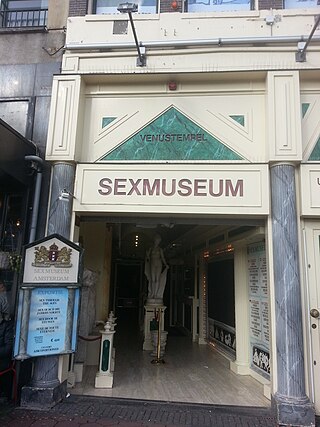
The Sexmuseum or the Temple of Venus is a sex museum located in Amsterdam, Netherlands. The museum was opened in 1985. It had 675,000 visitors in 2015, making it one of the most visited museums in the Netherlands.
Sight 45: Annick van Hardeveld
The Monument to Annick van Hardeveld is a war memorial in the centre of Amsterdam. The monument in the form of a bluestone pedestal with a plaque has been placed on the Hekelveld, in front of the building that bears house number 25. It was designed by the artist Hans Bayens.
Sight 46: NACO-house
The Office of Koppe's Scheepsagentuur, also known as the NACO house, is a building on the De Ruijterkade, Amsterdam-Centrum. It was included in the monument register on 22 April 2002 because of the combination of the Amsterdam School and an exotic architectural style, especially in the roof. It has been standing at bridge 2274 over the Oostertoegang since 13 December 2021.
Sight 47: Living by Numbers
The HIV/AIDS monument is an artistic work of art on De Ruijterkade in Amsterdam-Centrum that was unveiled on 1 December 2016.
Sight 48: Muziekgebouw
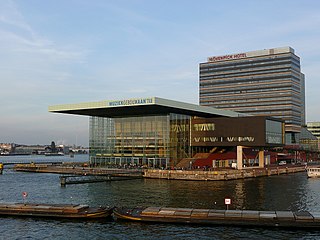
Muziekgebouw aan 't IJ is the main concert hall for contemporary classical music on the IJ in Amsterdam, Netherlands. The building opened in 2005 and is located above the IJtunnel, a ten-minute walk from Amsterdam Centraal station. The building was designed by Danish architects 3XN. The Bimhuis is part of and partly integrated in the Muziekgebouw aan 't IJ.
Share
Disclaimer Please be aware of your surroundings and do not enter private property. We are not liable for any damages that occur during the tours.
GPX-Download For navigation apps and GPS devices you can download the tour as a GPX file.

